People of the Book
Jews are often known as am ha-sefer, people of the book, referring to the importance of the written word in the religion. The Torah is not only the central text, but also the holiest and most important object in Judaism. The word Torah is derived from the root yrh (yareh) meaning teaching or instruction.
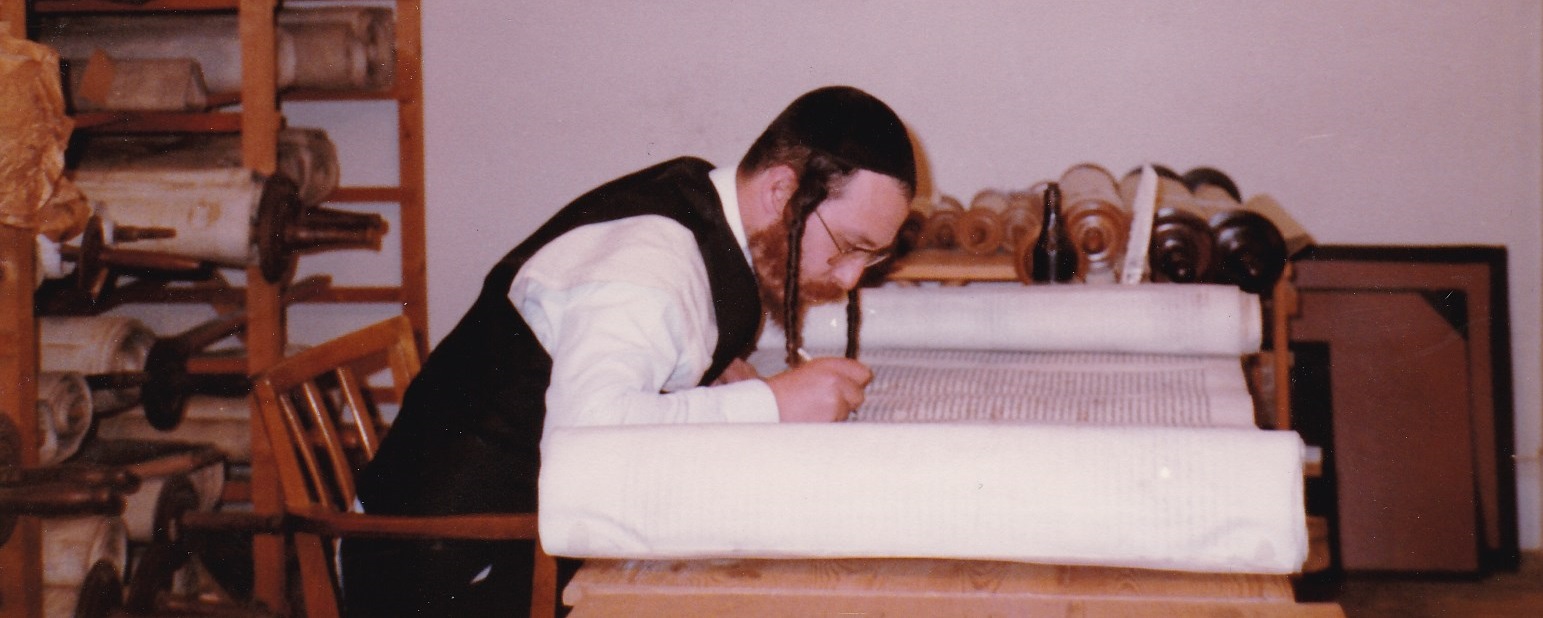
The Torah is the first part of the Hebrew Scriptures and contains the five Books of Moses. It is hand-written on parchment by Soferim (scribes) who are specially trained, devout and knowledgeable in the laws concerning writing and assembling a Torah. Sofer is from the Hebrew root “to count.”
Klaf
The Sofer writes on separate sheets called Yeriot, of parchment or vellum called klaf. EachYeriah is prepared from the skin of a kosher animal and must be checked by three Rabbis before it can be used.
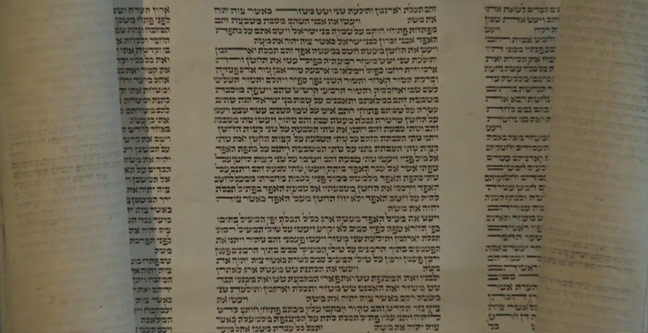
Yeriot, sewn with Giddin
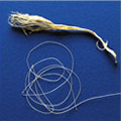
The finished Yeriot are sewn together with Giddin (sinews) taken from the leg or foot of a kosher animal. There is one stitch for every six lines of text and they are on the back of the parchment, so that they are not visible from the front. A Yeriah can have no less than three and no more than eight columns.
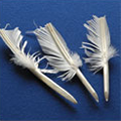
The text is written with a quill, taken from a kosher animal – usually a goose or turkey feather – with the point cut to a special shape. Many quills are used in the course of writing one Torah. No instrument containing iron or steel may be used in the creation of a Torah scroll, because these metals are used to create instruments of war.
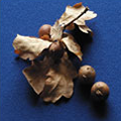
Only permanent black ink may be used and it is prepared in small quantities from oak galls to ensure that it is always fresh. The finished Scroll is secured to and wound on wooden rollers known as Etz Hayim (literally tree of life).
Tikkun
The text of a Torah Scroll cannot be written from memory; it is copied from a master copy called a Tikkun. It is written in Hebrew in special permanent ink, without vowels or accents. A complete Torah has exactly 304,805 letters in 79,976 words, 5,844 verses and 245 columns.
There must be no textual errors and every letter must be legible and perfect. The lines must be fully justified and the letters may be extended for this purpose. The space between the columns must be the width of two fingers.
Torah Scrolls are read in Synagogues around the world each week and on Jewish festivals and on fast days. Out of respect for the Torah, the parchment must not be touched with bare hands when reading from it. A pointer, in Hebrew yad, is used by the reader to follow the text.
Sofer Stam
Soferim authorised by the Memorial Scrolls Trust are Sofer Stam, an acronym for sefer torah (Torah scroll) tefillin (phylacteries) and mezuzah. They have agreed to respect the integrity of our scrolls, many of which are hundreds of years old and are written in various styles. The Ashkenazi and Sephardi calligraphic styles vary somewhat. Greater variations in lettering existed a few hundred years ago. Torah scrolls written by Kabbalistic Soferim had swirls in certain letters, with each letter said to convey a mystical meaning. Today, there is greater standardization among Torah scrolls.


